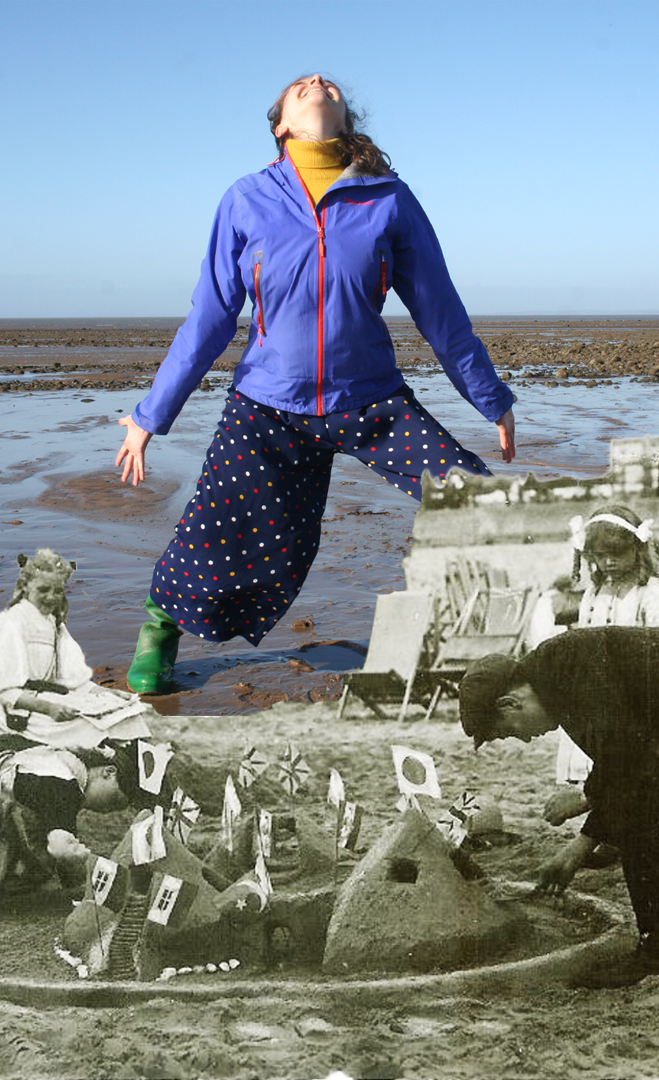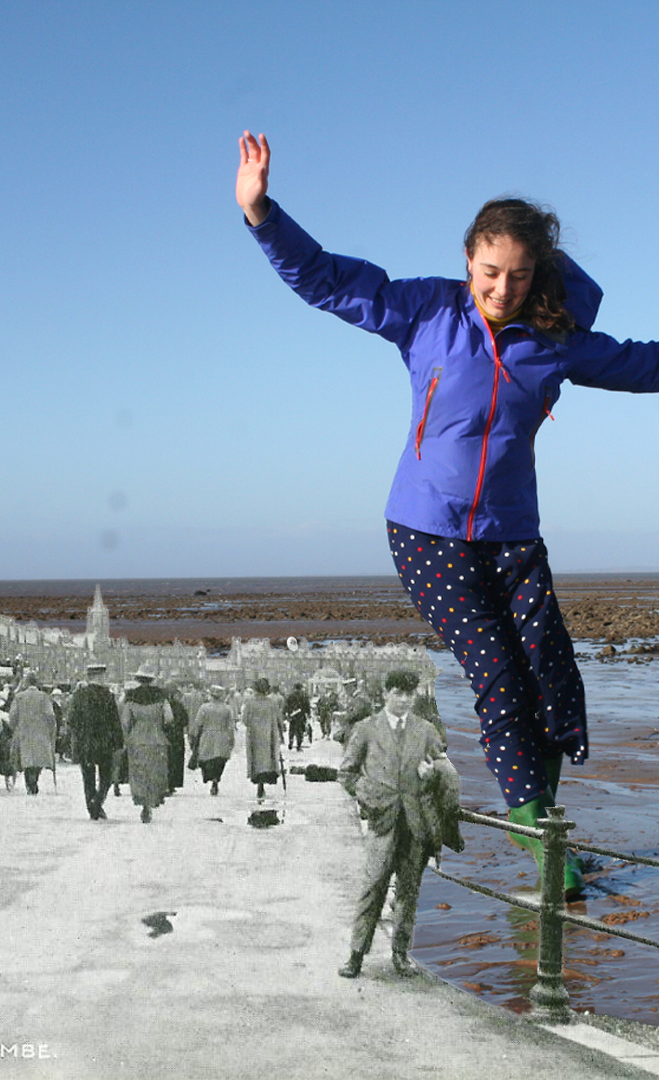The Wakes
A fun-filled exploration of the wakes weeks heritage, the fresh sea breeze and the freedom of the Bay.
—
Join Jenny Reeves, Artist in Residence of the Bay, as she shares her research and creative process for ‘The Wakes’ choreography, and watch the tutorial to learn the dance yourself.
Date Posted —
27.01.2021
The initial concept:
‘The Wakes’ takes it’s inspiration from the history, stories and archival material of the Wakes Weeks. During the industrial revolution, Wakes Weeks would mean the closure of certain mills and factories across the North of England and beyond, and the whole workforce would take a regular summer holiday to a seaside town such as Morecambe and Blackpool.
Each town in Lancashire took the holiday on a different week in the summer so that, from June to September, each town was on holiday a different week. In 1906, an agreement on unpaid holidays was reached which became the pattern for the Wakes holidays in Lancashire mill towns.
For many, it meant a week at the seaside: golden sands, the wide blue sea and the cry of seagulls. A well-deserved rest and a chance to breathe fresh air away from the cotton dust and dirt of the mills.
The creative process:
Much of the movement material was fuelled by the excitement of being bundled onto the ‘Holiday Special’ train which would have arrived into Morecambe Station (now the stone jetty) directly from the mill towns. Excited holiday makers would have tumbled from the train right onto the edge of the sea, immediately inhaling the fresh sea air. Workers looked forward to and prepared for their annual summer holiday for weeks, including waiting in very lengthy queues at the hairdressers to ‘get shawn’.
You’ll see at the start of the dance lots of nervous excitement from the jittery legs and finger tapping frustration. There are humorous moments of being crammed into a packed train, getting squished into compromising shapes, closely followed by moments of pure elation at arriving on the sand and seeing the distant blue horizon. Joyous moments of writing your name in the sand with your toes, swinging your brolly as you promenade and the incredible feeling of those first few breastrokes in the cool deep waters.
Film footage used as creative impetus:
With their summer afternoon clarity, Mitchell and Kenyon’s images of Morecambe remain gorgeously fresh. The respectable pleasures of the white-collar resort are communicated by static shots (men, women and children on the promenade) and others filmed from a horse-drawn tram: onlookers are encouraged to wave, while excited boys race the carriage. The seaside shimmers in the background.
The film ends on a wave across the street and a view of the poster advertising the winter gardens show at which this film, commissioned and exhibited by the flamboyant showman AD Thomas, was first screened. It subsequently travelled at least as far as Yorkshire (there's evidence of it being screened in Bradford).
Watch Panoramic View of the Morecambe Sea Front (1901) online - BFI Player
The Tutorials:
I really wanted everybody from wherever they are in the Country and no matter their ability to be able to learn this uplifting choreography as the movement itself is very joyous and creates a strong sense of well-being. Everything we know to be good for us, the outdoors, moving, fresh air and music are brought together in this catchy number to Morecambe’s theme tune ‘Bring Me Sunshine’
There are moments that encourage us to explore our inner child and draw our names in the sand, imagine yourself on the beach 100 years ago arriving at the seaside and the feeling of elation that the wakes holiday makers would have had.
The dance is suitable for EVERYONE no matter your age or ability. Have a go, connect with others and spread the joy of ‘The Wakes’.
About Jenny Reeves and the Residency:
Born and bred in Lancashire, Jenny has always had a strong affinity with her home and returned after a number of years training and dancing professionally across the globe. The forgotten and hiding stories from the North of England are what drew her back, to begin a wealth of creative work bringing light to our heritage. In 2016 Jenny created About Time Dance Company and since has built a brilliant portfolio of projects exploring heritage through dance.
Jenny has previously worked with Deco Publique in Longways/Crosswise, a site-specific dance performance co-produced and co-curated with Morecambe Bay Partnership. Inspired by David Cox’s provocative paintings of the crossings, a cast of professional dancers and local participants imagine the stories and tales of the women that once crossed the sands in the last of the light.
The Morecambe Bay Residency Programme will provide Jenny with a platform to create a series of performances, community engagement projects and in-depth research. Jenny is proud to be a resident dance artist in Morecambe Bay, the place which she calls home and the main source of inspiration for her creative work.
Keep an eye on our social media platforms and journal pages to see Jenny create a trail of dance explorations for the public to enjoy, both in digital and live formats, as we trace the road map out of Lockdown.






